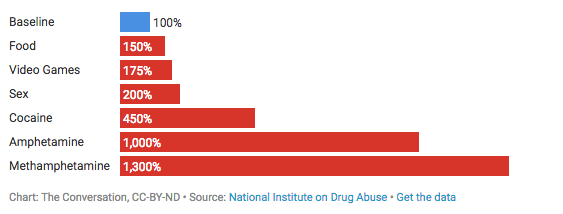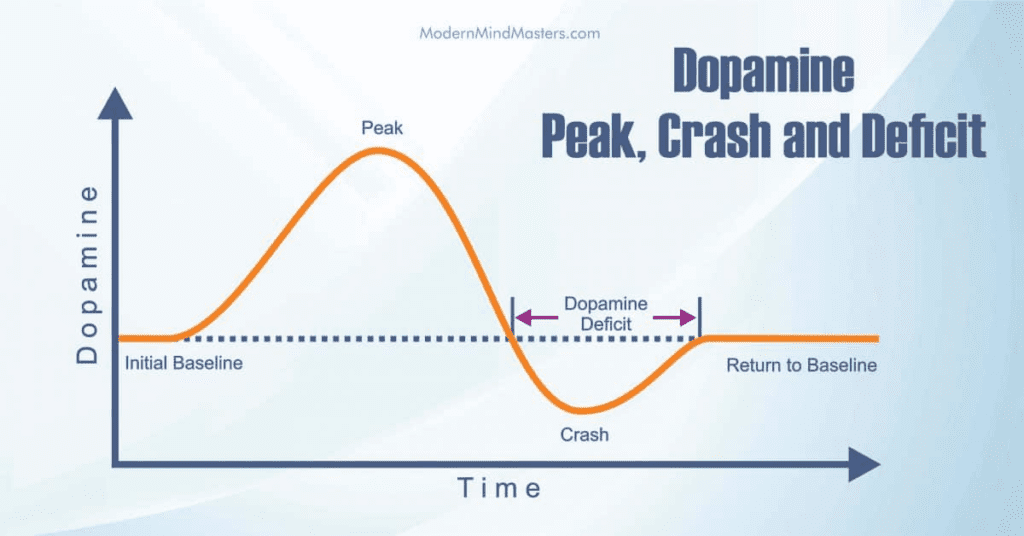Dopamine has been all the rage lately, in large part because of podcasts and books like these.
Dopamine is known as the “pleasure hormone.” When it’s released, we feel good. For instance, here is how much dopamine is released with each of the following activities:

There’s a reason why people play video games and do drugs. The dopamine hits they provide make us feel good.
Listening to music, working, having an interesting experience, and laughing with friends all increase dopamine levels as well, albeit more naturally than most of the activities on the chart.
Yet, what’s interesting about dopamine (both natural and unnatural) is that for every dopamine spike from a stimulus (i.e., food, video games, drugs, etc.), there is an opposite reaction that looks like this:
